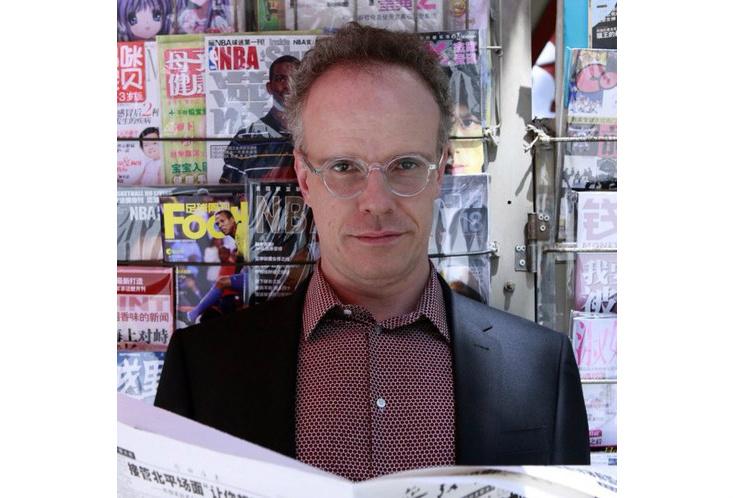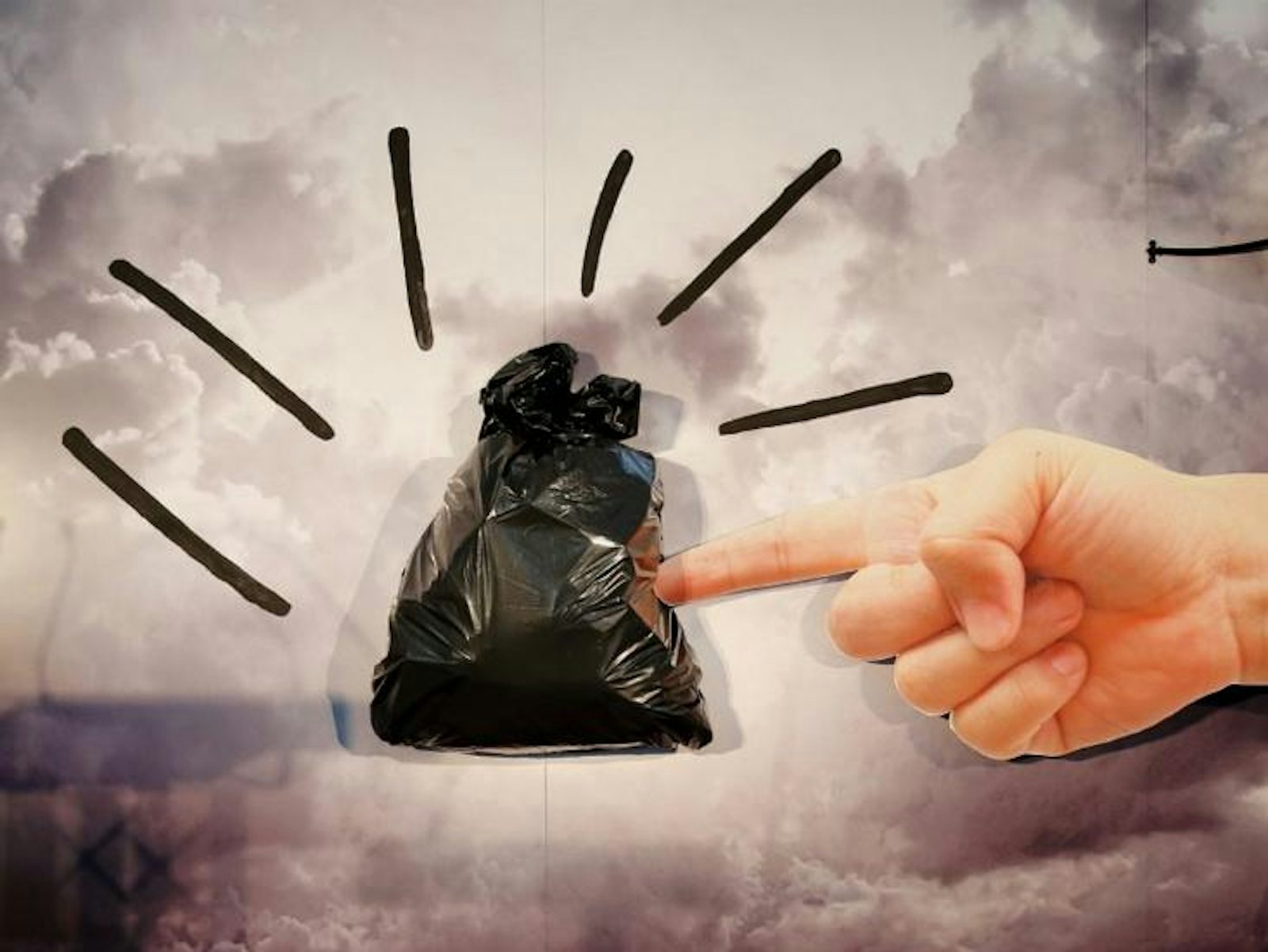
Hans-Ulrich Obrist seems to be everywhere—and it’s not much of an illusion. Widely regarded as the most influential figure in today’s art world, he’s worked with a who’s-who of major artists, from painter Gerhard Richter and sculptor Jeff Koons to performance artist Marina Abramovic and architect Rem Koolhass. From his perch as co-director of exhibitions and programs at London’s Serpentine Gallery, the Swiss-born Obrist curates exhibitions around the world, logging a huge amount of travel to attend to that work. He’s also just come out with a new book, Ways of Curating, a slender volume that’s part memoir and part creative manifesto.
Given his immersion in the artistic avant-garde, it may be surprising to see Obrist’s name popping up alongside prominent figures in the science world. He recently teamed up with the Edge’s John Brockman to put on an “Extinction Marathon” in London. He’s also curated exhibitions with famed philosopher of science Bruno Latour and pioneering quantum physicist Anton Zeilinger. Obrist is on a mission to cross disciplinary boundaries, so it makes sense that he’s charging into the chasm that divides science and art.
The hyperkinetic Obrist is constantly on the move, but I managed to corral him for an interview at the BBC’s studio in London. Interviewing him is a bit like getting swept up in a tornado. He talks at double speed and jumps quickly from one big idea to the next, often dropping the names of various cultural luminaries he’s worked with over the years. We talked about Obrist’s efforts to connect artists and scientists.
When did you become interested in science?
I was first inspired by artists, and I wanted to know everything about the history of curating. Then I realized if I wanted to understand the forces affecting art, I needed to understand what was happening in science. I was very interested in visiting the practitioners in the places where they worked, so I would visit scientists in their labs. I went to Brussels to meet [Nobel Prize-winning chemist] Ilya Prigogene. And then I started to think, what would it mean to curate in a more interdisciplinary way? I’ve seen myself as a bridgebuilder, and the biggest missing bridge is between art and science.
But why dive into this whole world of what scientists do?
It always starts with conversations with artists. I realized that they had an interest in science, but they didn’t have access to it and didn’t meet scientists. I often start with the idea of what’s missing in the world. Artists would often tell me they have a desire to work with scientists, engineers, and inventors. They encouraged me to make that happen. So at the beginning, I brought artists and scientists together at conferences. Then around 1999, I started wondering, could we actually do exhibitions? Antwerp wanted a big contemporary project, so we thought we could declare Antwerp a laboratory city. That became the project Laboratorium. We built a core group of artists and scientists, and started to think how we could bridge the gap between them.
How did artists and scientists work together in this Laboratorium?
It has to do with the very specialized vocabulary of science, which art no longer has access to. So we brought in the prominent philosopher and historian of science Bruno Latour. He had never worked with the exhibition format and was at first skeptical of it. So we discussed how we could connect the artist’s studio and the scientist’s laboratory because both practices emanate from a particular social space. And Latour came up with a brilliant idea that was extremely simple. He wanted to create a “Theater of Proof,” where we would recreate important experiments from history. The intent wasn’t to do historical re-enactments to celebrate past scientific successes, but to grapple with the difficulty of understanding and interpreting what an experiment really means. So we invited artists and scientists to present experiments in public.
Another prominent philosopher of science, Isabelle Stengers, curated a space devoted to Galileo’s experiments, where billiard balls rolled down inclined surfaces. Galileo carried out those experiments while formulating the law of falling bodies, which governs how and why the planets move. In her lecture, Stengers asked whether the experiment with the balls had generated the law, or whether Galileo had conceptualized it first and used the experiment only to double-check to see if the balls behaved as he predicted.
Latour was so inspired by this Theater of Proof that he went on to curate three major shows and actually spent entire years doing exhibition catalogs. Being a professional curator, I’ve curated hundreds of shows, but I’m very interested in what happens when people from a completely different field go into curatorship. I call it “unexpected curatorship.” Again it leads us back to these bridges between art and science.
It sounds like you’re trying to figure out where creative inspiration comes from. Is the creative process similar for artists and scientists?
Yes. For example, if you look at mathematicians at the extreme peak of discovery, it’s very similar to artists. Mathematicians talk about the beauty of their equations.
But it would seem they’re doing very different things. Scientists are trying to understand and decode the existing world, while artists want to create something entirely new.
It’s difficult to generalize how artists or scientists see the world. We’re not trying to make art and science equal. Obviously, they’re very different. And that leads us back to the application of curating. There are not only art museums, there are also science museums. It’s interesting to see how we can use the curatorial history from all these fields.
What you’re doing seems to be a throwback to the wunderkammer—the old cabinets of curiosities—where both man-made and natural wonders would be displayed in the same space.
Yes, the wunderkammer presented all these different artifacts of art and science in a suite of rooms. Athanasius Kircher was another inspiration early on. In the 17th century he studied geology, optics, astronomy, perpetual-motion machines, Chinese culture, clock design, and mathematics—an amazing array of subjects—and he connected them. He even came up with the amazing idea of connecting his private bedroom with the exhibition room through a speaking tube. I came across his work in the monastery of St. Gallen. As a child growing up near its library, I became familiar with Kircher. That was a huge inspiration for me. These collections led to museums in public institutions. (See Nautilus’ own online wunderkammer here.)
But then we separated these collections. Everything to do with science went into natural history museums, and works of art went into art museums.
That’s right. It’s why this is an important moment to bring them together and build bridges. That can happen through exhibitions. When I moved to London in 2006 to become co-director of exhibitions and programs at the Serpentine Gallery, I joined the director, Julia Peyton-Jones, and we came up with idea of “Marathons.” We wanted a format where artists and other practitioners could create a dialog between all these different fields of knowledge for 24 hours.
How does this work?
Every year at the Serpentine, we have a pavilion. Julia had this wonderful idea—that in order to exhibit architecture, we have to build it. It’s not satisfactory just to look at models and drawings. So Zaha Hadid and other architects invited artists to develop a pavilion on the lawn in front of the Serpentine. It also means that institutionally, it doesn’t freeze. Every year, there’s a new temporary wing. We have to reinvent the Serpentine every summer with new content.

I’ve always been inspired by Black Mountain College, where all the disciplines met. You had poets, artists, and composers—and also inventors like Buckminster Fuller. How could we move toward a 21st-century Black Mountain College? That’s still my dream—to build and work with a school like that for our own time. So the Marathons are kind of a sketch for that. We bring together artists, architects, theater directors, engineers, scientists. It’s a conversation that lasts 24 or 48 hours, often non-stop.
They meet each other in the green room and get to know each other. Lots of collaborations grew out of conversations in that green room. It’s astonishing. Many participants have lived in London their entire lives, but very often they’ve never met. They’re great practitioners in their own fields, but they just don’t meet people from other fields.
What can scientists and artists learn from each other?
We have such huge problems and issues to be addressed, so we have to pool all these competencies. Just the other day, we gathered together to talk about the solar airplane. It was fascinating to see artists like Tino Sehgal working with solar inventors to actually build a solar airplane.
In our last Marathon, Stewart Brand came to the Serpentine. He invented the Whole Earth Catalog, which is this wonderful DIY compendium, bringing together products and information for anyone interested in creating new ways of living. Stewart Brand is a scientist who’s also a curatorial figure. Early on he recognized that personal computers have the possibility for innovation. In 1962, when he witnessed a Stanford computer scientist playing Spacewar—one of the first video games—he saw computing as another form of “access to tools.” So if you think of curating now being democratized by the Net, and everybody is a curator, it’s interesting to see those things blending online. It’s not a coincidence that at this moment of the digital age, we see more urgency to bring these two cultures together.

Isn’t Stewart Brand’s current obsession de-extinction—trying to bring extinct species back to life?
Our last Marathon at the Serpentine was about extinction, which brought together scientists and artists. The artist Susan Hiller did a wonderful project about the extinction of languages, which are disappearing all over the world. Extinction is not only about species; it’s also about cultural phenomena.
Extinction is important to me in relation to handwriting. I have an Instagram program where every day I invite artists, architects, and scientists to hand a message to the world in their handwriting because we see handwriting going extinct. To bring handwriting back, not by nostalgically lamenting its disappearance, but by actually putting it center stage on the Internet and celebrating its beauty. Two people never have the same handwriting. To celebrate that difference and variety is part of what I do on Instagram and Twitter every day.
Steve Paulson is the executive producer of Wisconsin Public Radio’s nationally syndicated show To the Best of Our Knowledge. He’s the author of Atoms and Eden: Conversations on Religion and Science. You can subscribe to TTBOOK’s podcast here.






























